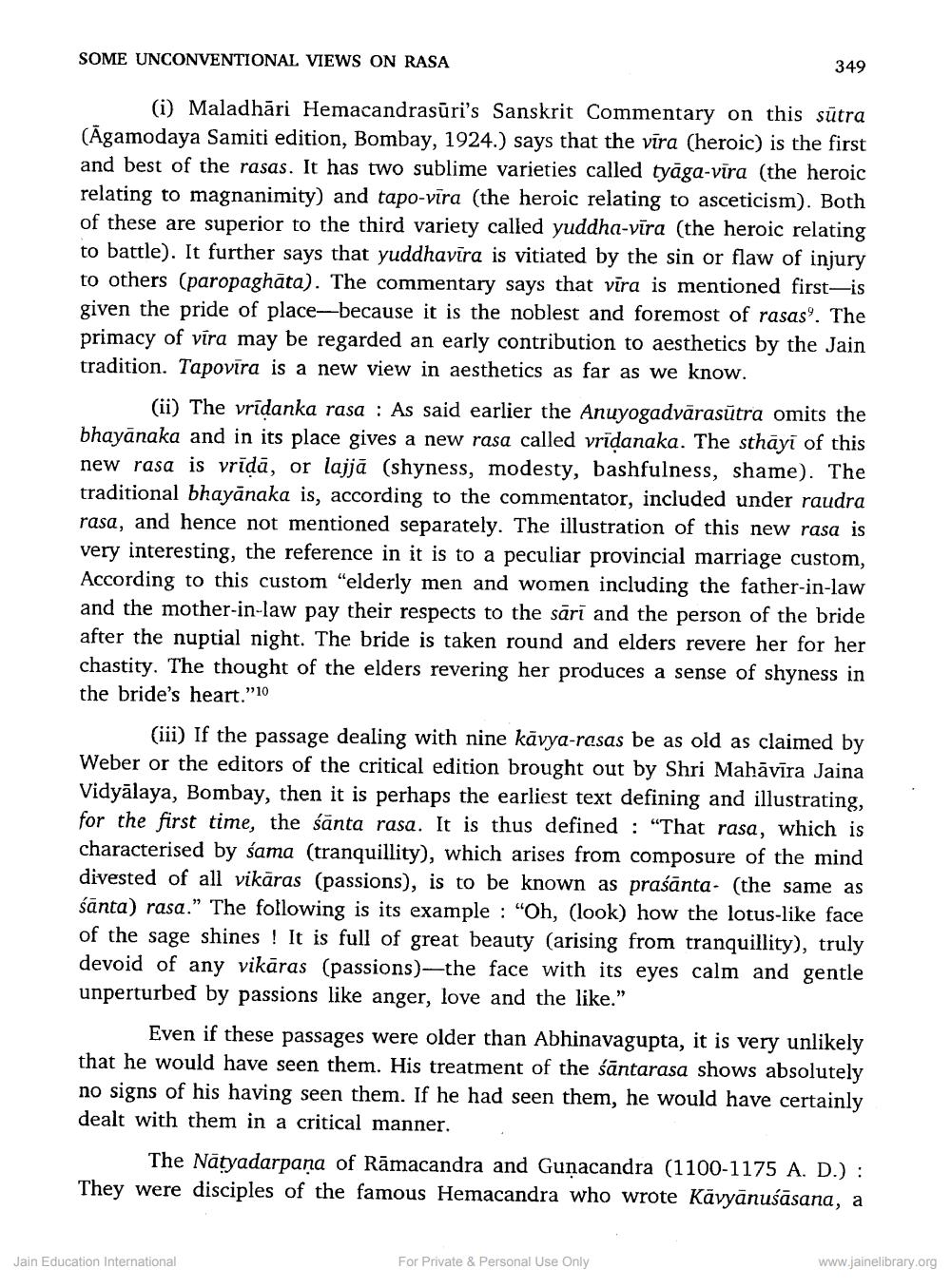________________ SOME UNCONVENTIONAL VIEWS ON RASA 349 (i) Maladhari Hemacandrasuri's Sanskrit Commentary on this sutra (Agamodaya Samiti edition, Bombay, 1924.) says that the vira (heroic) is the first and best of the rasas. It has two sublime varieties called tyaga-vira (the heroic relating to magnanimity) and tapo-vira (the heroic relating to asceticism). Both of these are superior to the third variety called yuddha-vira (the heroic relating to battle). It further says that yuddhavira is vitiated by the sin or flaw of injury to others (paropaghata). The commentary says that vira is mentioned first-is given the pride of place--because it is the noblest and foremost of rasas'. The primacy of vira may be regarded an early contribution to aesthetics by the Jain tradition. Tapovira is a new view in aesthetics as far as we know. (ii) The vridanka rasa : As said earlier the Anuyogadvarasutra omits the bhayanaka and in its place gives a new rasa called vridanaka. The sthayi of this new rasa is vrida, or lajja (shyness, modesty, bashfulness, shame). The traditional bhayanaka is, according to the commentator, included under raudra rasa, and hence not mentioned separately. The illustration of this new rasa is very interesting, the reference in it is to a peculiar provincial marriage custom, According to this custom "elderly men and women including the father-in-law and the mother-in-law pay their respects to the sari and the person of the bride after the nuptial night. The bride is taken round and elders revere her for her chastity. The thought of the elders revering her produces a sense of shyness in the bride's heart."10 (iii) If the passage dealing with nine kavya-rasas be as old as claimed by Weber or the editors of the critical edition brought out by Shri Mahavira Jaina Vidyalaya, Bombay, then it is perhaps the earliest text defining and illustrating, for the first time, the santa rasa. It is thus defined : "That rasa, which is characterised by sama (tranquillity), which arises from composure of the mind divested of all vikaras (passions), is to be known as prasanta- (the same as santa) rasa." The following is its example : "Oh, (look) how the lotus-like face of the sage shines ! It is full of great beauty (arising from tranquillity), truly devoid of any vikaras (passions)--the face with its eyes calm and gentle unperturbed by passions like anger, love and the like." Even if these passages were older than Abhinavagupta, it is very unlikely that he would have seen them. His treatment of the santarasa shows absolutely no signs of his having seen them. If he had seen them, he would have certainly dealt with them in a critical manner. The Natyadarpana of Ramacandra and Gunacandra (1100-1175 A. D.) : They were disciples of the famous Hemacandra who wrote Kavyanusasana, a For Private & Personal Use Only Jain Education International www.jainelibrary.org




